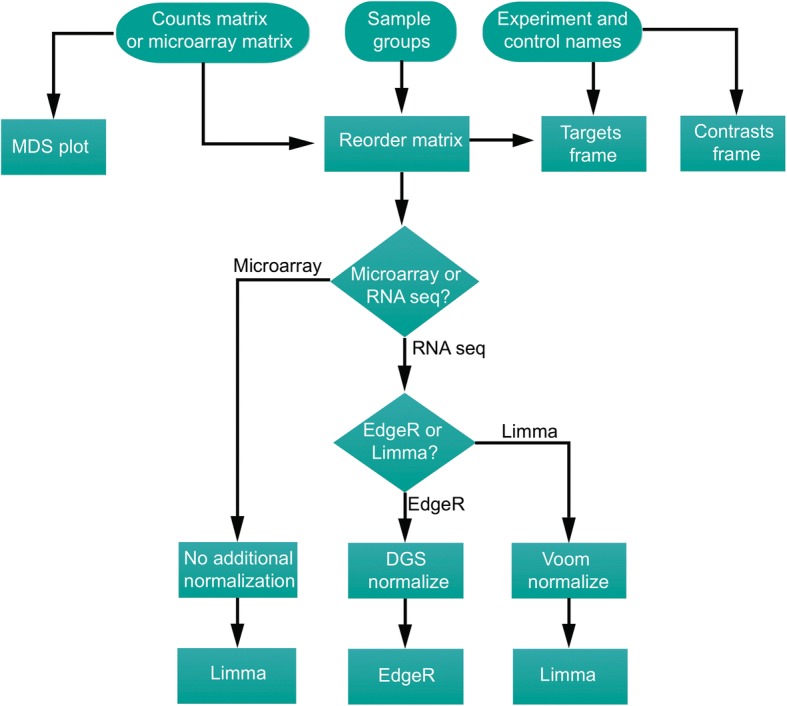Fig. 3.

Control flow of statistical analysis performed by RIVET. Flow diagram of user input and RIVET analysis. The RIVET framework takes 3 forms of user input (circles on flow diagram): uploaded normalized microarray matrix or RNA sequencing counts matrix, user-defined control and experiment samples in both transcription and translational fractions, names of the experiment and control groups. Three object types are created using the three user-inputs: 1) counts matrix and sample groups are used to generate a reordered matrix of genes by samples. 2) The reordered matrix and user-defined experiment and control names are used as input to generate a targets dataframe required by both edgeR and limma as part of defining the experimental design. 3) User-defined experiment and control names are used to generate a contrasts dataframe defining the contrasts as experiment-control for translation and transcription samples. Allow flow streams converge on the user selection of microarray vs. RNA sequencing. If microarray, the reordered matrix, targets frame, and contrasts frame are used as input to limma. If RNA sequencing, the user is prompted to select between limma or edgeR statistical analysis choices. If limma is chosen, the reorder-matrix is voom normalized and used as input along with the targets frame and contrasts frame into a limma. If edgeR is chosen, the reordered matrix is DGE normalized and input along with targets frame and contrasts frame into edgeR
